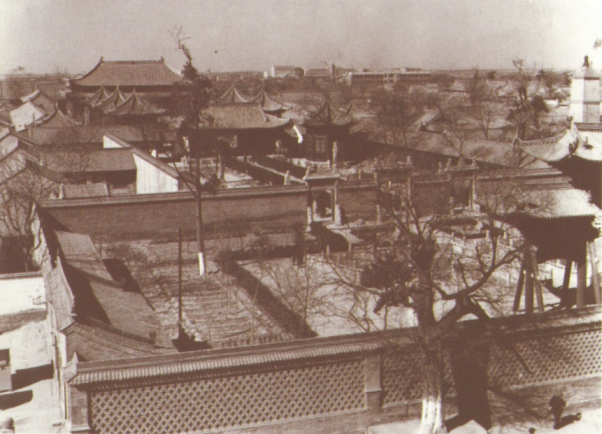Confucius Temple in Xi’an, Shaanxi Province
From:新华网Author: 2024-04-08 15:08

An Aerial view of Xi 'an Confucius Templein 1957 (from Confucius Temples Around the World , P79)

Picture of the West Hallin 1960 (fromConfucius Temples Around the World, P85)

The“Jia Sheng Hao Zhao”Steleof Yuan Dynasty(from Confucius Temples Around the World,P87)
The Confucius Templein Xi’an, aspart of today's Xi 'anBeilin Museum,is amongthe first batch of national key cultural relics protection units together with Xi 'an Stele Forest. The history of Xi 'an Confucius Templecan be traced back to the early Tang Dynasty. Judging from the inscriptions of various generations, the temple has beenmade up of two courtyards since it was moved to the present site in Chongning period of the Northern Song Dynasty, and the buildings in the temple are similar to the normalofficialConfucian temple-schools. There are 6 symmetricalstelepavilions in the courtyard, which were built in the late Qianlong period of Qing Dynasty to store the inscriptions of Emperor Kangxi, Emperor Yongzheng and Emperor Qianlong. The north end of the central axis used to be the DachengHall, which retains significant architectural features of Ming Dynasty and is the central building of Xi 'an Confucius Temple. Unfortunately, it was destroyed by a fire caused by lightning in 1959, and its foundation was demolished in the 1970s and turned into theStele ForestSquare.The Shitai Classic of Filial Pietypavilion facing the square is the landmark building of Xi 'an Stele Forest and the entrance tothis cultural treasury. The Stele Forest,which gradually formed on the basis of the Kaicheng Stone Classics of Tang Dynasty,can be regarded as the unique "pavilion of respectedclassics" in the Xi 'an Confucius Temple.
Xi 'an Confucius Templeis the oldest of the existing ancient official Confucian temples, and it is an important historical and significant cultural heritage like Xi 'an Stele Forest. Xi 'an BeilinMuseum, formed by the twojointly , has become a well-known special museum at home and abroad for collecting, displaying and studying ancient stele inscriptionand stoneinscription. It has a collection of more than 2,400 kinds of stone inscriptions, epitaphs, mausoleum stone inscriptions, religious statues and other stone relics from the Han Dynasty to the Republic of China, with more than 3,300 pieces, among which 134 pieces of 19 kinds are regarded as national treasures and535pieces of 272kinds asfirst-class cultural relics.
Edit:董丽娜
The copyright of the article and the picture belongs to the original author. If there is any infringement, please contact to delete it